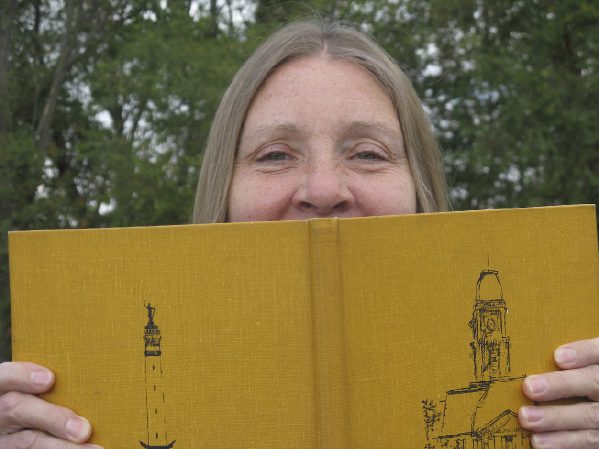The Carnival of Vice
From Time to Thyme
By Paula Dunn

This week we’re journeying back 122 years to Noblesville’s 1902 street fair.
According to an 1898 Louisville Courier Journal article, street fairs — fairs held on streets in the heart of a city — were THE thing in the Midwest at that time, taking the place of “the time honored country fair, with its fat pumpkins, fat poultry, fat pigs and its ‘hoss race’ . . .”
Generally lasting a week, the street fairs were organized and run by committees of local businessmen who hoped to profit from the crowds the fairs attracted.
The first street fair in the county took place in Cicero in 1900. Noblesville’s first fair opened a year later.
In both cases, and in the later street fairs held at Arcadia, carnival attractions were part of the entertainment, but the accent was still on typical county fair-type events — stock shows, contests, band concerts, etc.
Noblesville’s 1902 street fair was a bit different. The local newspapers seesawed back and forth between calling it a street fair and a carnival. It was actually a bit of both, but it leaned more toward the carnival side.
For one week, Noblesville was carnival crazy. Festive decorations provided by local businesses and organizations were everywhere and residents were encouraged to get into the spirit of the occasion by wearing the carnival colors, red and yellow, “any way you desire.”
The partying began Monday evening, August 11, with “King Rex” arriving by boat on White River. After disembarking, Rex, his entourage and the Sheridan band led a parade of floats and costumed spectators through Noblesville’s business district. (Shades of Mardi Gras!)
Many parade participants carried red torches — freebies passed out by the fair’s organizers — which “gave the line of march a very pretty effect.”
For the next five days, the streets around the courthouse square were filled with tents, booths and stages. Some attractions were free, others required admission.
The free shows seem to have consisted mainly of acrobats and gymnasts, although one newspaper noted that a “new novelty known as bladder fights and rushes” was being added. (I can only guess what that was.)
Among the paid attractions provided by the carnival company were a vaudeville show, Georgia minstrels, an illusion show, a freak show, and dancing girls.
There were also two “electrical theaters” (i.e. moving pictures.) One showed President McKinley’s funeral; King Edward VII’s coronation and a reproduction of the recent eruption of Mt. Pelee, a volcano on the island of Martinique.
Entries in the ladies’ fancy work and painting competitions were displayed in the art hall in the Lacy building on the north side of the square. (Most recently that space was occupied by the Linden Tree.)
It was noted that a restroom would be available for ladies in the art hall. (I guess men were on their own!)
Among the fair’s other diversions were a cakewalk (dance contest,) baseball games, a prize fight, a flower parade and an “industrial parade” put on by local businesses and factories.
Overall, everyone seemed to have a great time . . . except the members of the Noblesville Ministers Association. They condemned the street fair as a “carnival of vice” in their sermons the following Sunday.
The Ministers Association was a pretty powerful organization, so powerful that they managed to get one of the shows (probably the dancing girls) shut down before the fair ended.
An attempt was made to organize another street fair in 1903, but between the ministers’ disapproval and a ruling by a judge that the streets around the square couldn’t be obstructed, Noblesville saw no more street fairs.
Arcadia and Cicero continued to hold them, however.
Notable Nineties Update: Diane Nevitt added Clarence “Clem” Beer, husband of Charlotte “Char” Beer, who was added to the list last week. The couple have been married for over 70 years! Congratulations!
